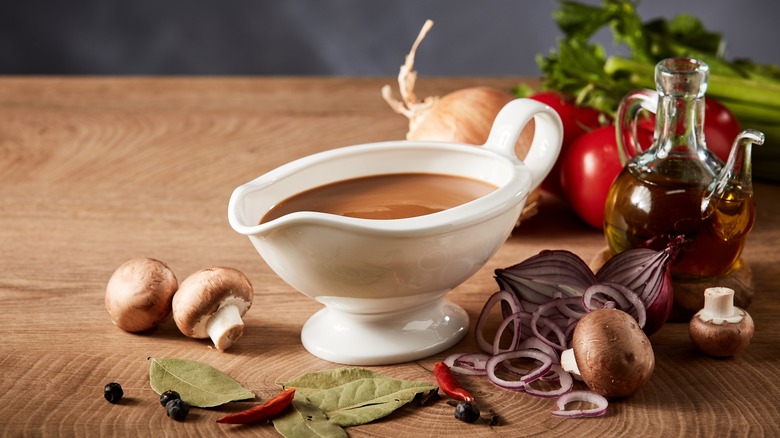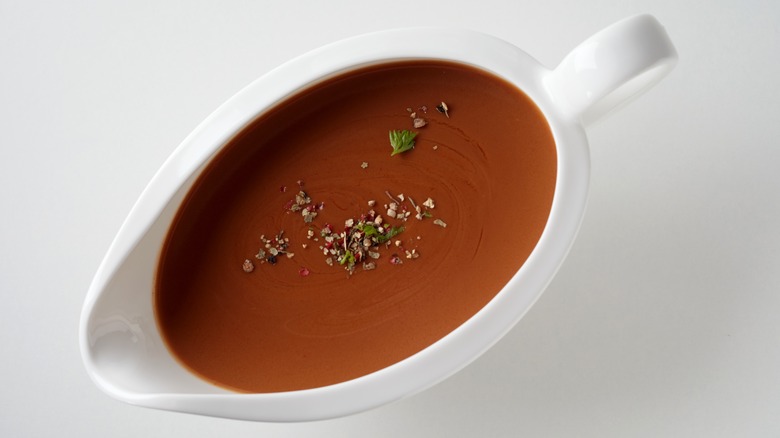The Simple Way To Thicken Runny Gravy
If you've gone through the trouble of making your own roast beef or even thawed out and roasted an entire turkey, shouldn't you make your own gravy? The jarred stuff is fine, but after you've come that far shouldn't you be able to make the most of your roast meat's drippings to craft an equally delicious gravy? Sadly, this is often easier said than done, and not knowing what you're doing can lead to all sorts of problems.
According to What's Cooking America, gravy is a type of sauce made from the precious and delicious drippings from roast meat mixed with a liquid and some kind of thickening agent like flour. You can't just throw in the flour and call it a day, though. Instead, start by making a roux, which is equal parts fat (butter or oil) and flour (via Jessica Gavin). The roux helps the gravy thicken, but things can go sideways if it's not executed properly.
One of the most common problems encountered when making gravy is a bad consistency. Overly thick gravy is a common issue, but it can also come out too thin. Southern Living points out that the ideal consistency for gravy is thick enough to coat the back of a spoon without clinging to it excessively. If you've finished mixing your gravy, and it's still too thin, there are a few techniques you can use to patch things up.
Ways to save your gravy
One of the easiest ways to fix a thin gravy is to continue cooking it, per Serious Eats. Simmering it longer causes the excess liquid to cook off, and brings your consistency closer to what you desired.
Another way to solve your gravy woes is to use a slurry, a standalone mixture of flour and the finished gravy that is reincorporated toward the end of the cooking process (via Kitchn). Mixing the flour and liquid outside of the pot allows it to be added to the gravy without resulting in serious clumps. As the mixture is incorporated slowly into the gravy, it should thicken it up. If not, you can simply repeat the process until you've reached your desired consistency.
Better Homes & Gardens recommends a similar process using only cold water and flour. The food site also suggests using cornstarch for extremely thin gravies. Just be careful not to overcook it because it can separate the gravy.
Another recommendation comes from celebrity chef Alex Guarnaschelli who uses vegetable puree instead of corn starch or flour. Guarnaschelli explained on Instagram that she uses a blended mixture of garlic, onions, stock, and spices to thicken and add flavor to the gravy.
So, if your gravy is too thin for the big potluck, have no fear, because you can still save all of your hard work.

